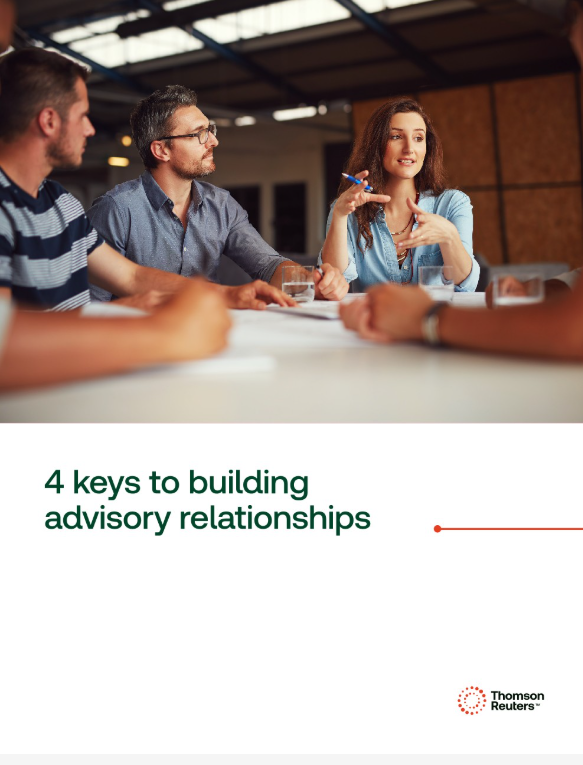Small accounting firms often face big challenges when it comes to scaling services. But the good news is that you don’t have to be a large firm to offer your clients more value.
One of the smartest ways small firms can overcome capacity and staffing limitations is by shifting from a referral mentality to a strategic partnership mindset. By building trusted relationships with a variety of professionals in your network, your small firm can extend service capabilities and scale impact.
Let’s take a look at how small firms can “think big” with limited resources.
Strategic partnerships, not referrals
Many small firms rely on referrals when they can’t fulfill a client’s need in-house. While this helps in the short term, it often leaves your firm out of the loop and limits your long-term value to the client. Instead, consider forming strategic partnerships with other trusted professionals such as legal advisors, IT consultants, valuation experts, or financial planners.
The goal isn’t to pass off your client; it’s to expand your firm’s reach and service offerings while remaining the central point of contact. Strategic partnerships enable you to say “yes” more often, offer broader expertise, and deepen client trust.
Chris Papin, owner of Papin CPA, PLLC, and his staff have mastered the art of providing big services for small firms. As an accountant and attorney, he understands how small accounting firms can meet the diverse needs of their clients.
“I think small firms need to focus on their strengths and leverage strategic partnerships differently to create space for their growth,” says Chris. “For example, if a CPA or EA does not carry a securities license, they wouldn’t invest funds for a client. Similarly, they wouldn’t go to court on a client’s behalf without a law license. They clearly know where the boundaries are.”
“The reality is you need both internal firm growth and external relationships to best serve your client base. If there’s something we cannot do, I use the term strategic partnership. These are trusted people we work with on a day-to-day basis. We have a handshake agreement to share information back and forth, but we try to quarterback the relationship for the clients.”
Know and communicate your value
Just because your firm is small doesn’t mean your value is small. In fact, many clients prefer boutique firms because of the personalized service, deep relationships, and agility they provide. The key is to own your value and communicate it with confidence.
Paul Miller, president of Business by Design, says that if you want to act like a firm bigger than what you are, it’s not about the referral. It’s about action.
“I think the value of leading an advisory relationship in some ways is just simple having these strategic relationships, and knowing what questions I need to ask,” says Paul. “It’s so comforting for clients, and that’s why you can’t just drop things and walk away. You do have to see it through, and that should be reflected in your pricing—why you charge what you charge. Your engagements should be more than just selling a transaction.”
When working with strategic partners, be sure your clients understand that your firm is orchestrating their broader financial strategy, not just outsourcing work. By positioning yourself as the hub of the client experience, you reinforce your firm’s value.
Stay involved in client relationships
Strategic partnerships only work if you remain actively involved in the client journey. Even when tasks are delegated, your firm should coordinate communication, manage expectations, and follow up on outcomes.
Think of yourself as the project manager and trusted advisor. You’re not just handing off work—you’re enhancing your client’s experience by bringing in the right expertise while still guiding the process. This level of involvement helps ensure that the client experience remains seamless and consistent.
When you collaborate with a strategic partner consistently, you develop a shared rhythm and understanding of how each other works—something that’s essential for presenting a unified front to the client. There’s real value in facilitation, and it’s important to distinguish between simply handing off a client and actively guiding the process. It’s about doing as much as possible to ensure your strategic partner is well-prepared and the shared client enjoys a smooth, high-quality experience.
Scale your impact without scaling your accounting firm size
Strategic partnerships aren’t the only way to scale smartly. Combine them with technology integration, standardized processes, clear communication, and value-based pricing to amplify your results.
- AI-powered tax technology helps automate repetitive tasks and facilitates collaboration with your partners.
- Standardized processes ensure efficiency and consistency across engagements.
- Clear communication—both with clients and partners—keeps everyone aligned.
- Value-based pricing reflects the comprehensive service you’re delivering, not just the hours worked.
By implementing these strategies, your small accounting firm can scale impact without scaling size, offering more services, building stronger relationships, and achieving sustainable growth without increasing headcount.
 |
|
For more insight on how to unlock your small accounting firm’s full potential, visit tax.thomsonreuters.com/en/products/practice-forward.








